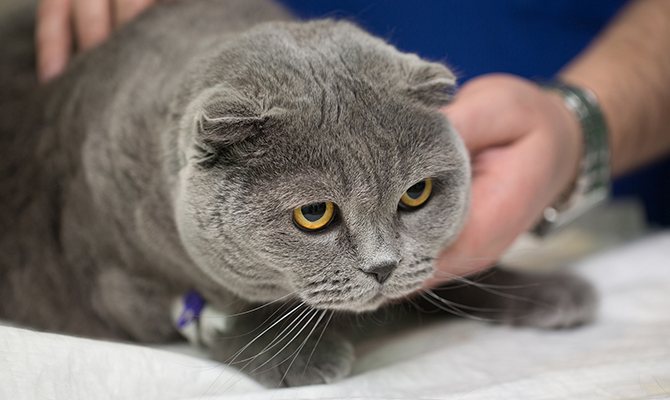Cat Training Tips
Cat parents are often faced with the question - can you train a cat? If the answer is yes, then how to train your cat? Cats are some of the most intelligent creatures to have walked the earth. And these fabulous furballs can be quite sassy and at times prioritize their independence and autonomy, giving rise to the popular misconception that they cannot be trained. Indeed, when it comes to formal training, dogs have an obvious edge, being able to minutely follow their owner’s commands, and perform complex tricks to impress the audience. However, cats are not that far behind either!
Though cats value their private time and are of a more independent temperament than dogs, these adorable furries are extremely sociable, making it easy to train them to perform various tricks. In addition, cats have a highly developed neural system and are more proficient by virtue of their IQ, giving them the upper hand when it comes to picking up new tricks!
The fact is cats can be trained to perform new tricks, correct their behaviour, and even be taught to perform tasks with finesse. However, while training your royal furry friend, you must always remember to treat them with patience and kindness and see how your feline picks up new skills in no time.
Things to remember while training a cat

Wondering how to train your cat or can you train a cat at all? Yes, if you have earned the love and respect of your majestic feline, it should be relatively easier for you to train a cat. However, given below are some quick pointers that will allow you to train a cat more effectively.
-
Keep the training sessions short:
As intelligent and fast-learner cats are, they need to be trained at their own pace. This includes training them in short sessions to avoid overworking or overwhelming them. As discussed earlier, cats value their alone time, so holding them back for long training hours might cause them to burn out, or resent training altogether. Instead, you can ensure quicker results by training your kitty for short, concise periods that will help them stay focused and pick up new tricks faster.
-
Eliminate distractions
Staying focused on one thing for a long time is probably not the strongest suit among cats. They are playful, inquisitive creatures who are easily led on by distractions. So, it is your responsibility to make sure your kitty can be trained in an environment free from any kind of distractions. Before starting your training session, remove anything that might be a distraction for your cat, this includes food, other animals, or toys. Loud noises can also be a distraction while your kitty is trying to focus, so make sure to train a cat in a quiet and calm place.
-
Focus on one action at a time
Cats are often prone to distractions and mood swings that can hamper training sessions. In addition, if trained over significantly long hours, your cat might start to lose its enthusiasm and interest. So, it is important to start with a trick that is easy to perform. Being able to pick up an easy trick will allow your kitty to familiarize itself with the training process, thus ensuring better results in future. Make sure to focus on one action at a time rather than simultaneously teaching your cat multiple tricks, which might overwhelm them.
-
Do not punish your cat for bad behaviour
If you are looking to teach cats, keep in mind that you are training an intelligent creature who values its privacy and independence. So, always remember to treat your cat with dignity while getting them to learn new tricks. Though cats are easygoing and share a loving relationship with their favourite humans, they are also sensitive creatures, so you wouldn’t want them to get upset by punishing them for bad behaviour. Punishing them for not being able to perform a task flawlessly might damage your kitty’s enthusiasm and confidence, further distancing it from its goal.
-
Start early
Cats are extremely playful as kittens but tend to become complacent with age. So, to have the best results from your training sessions, it is important to start training your kitty from an early age. This allows them sufficient time to pick up new tricks to impress people and also helps them to stay active and playful throughout their lifetime. In addition, cats tend to pick up training better at an early age. So, starting early also gives you the upper hand when trying to improve bad behaviour and correct them.
-
Being patient
Being patient undoubtedly ranks at the top of the list when it comes to dealing with a cat. As introverted as felines are, they are also sensitive and value their personal space. So, whether you are looking for how to train cats or are simply trying to befriend them, treating them with patience should be your first priority. In addition, cats are known to respond well to gentle, patient treatment, so exercising patience while training your feline buddy can assure quicker results. Cats are also often wilful, and treating them patiently will ultimately help foster a deeper bond between you.
-
Use plenty of treats
If you are a cat parent, it should not come as a surprise that foods, especially cat treats are excellent motivators when it comes to training your kitty. Cats are famously known for being foodies, who are unable to resist the sight of a delicious cat treat being laid out. So, it is a convenient technique to incorporate mouth-watering treats to boost the training sessions. In addition to drawing your cat’s interest to training sessions, treats can also be used as positive reinforcements to let your furball know right from wrong and gradually pick up tricks with ease.
Cats' inappropriate behaviour that can be corrected

-
Pooping outside the litter box
Cats are generally one of the tidiest creatures and prefer a designated spot to relieve themselves, which is usually a litter box. Albeit unusual, it is not rare to see cats pooping or peeing outside the litter box on occasion. This can indicate several issues such as a call for help from you. The other possible reasons might be stress and anxiety, or even a serious underlying health concern that requires medical attention.
However, pooping and peeing outside the box can sometimes also be bad behaviour, in which case it requires immediate correction before it becomes a regular habit. You can help your kitty overcome this problem by blocking out access to other areas where it might excrete, forcing it to poop in the litter box. Additionally, you can also encourage it to relieve itself inside the litter box by regularly cleaning it to prevent the accumulation of waste.
-
Biting
Cats are extremely affectionate creatures and love nothing more than snuggling up to their favourite human and asking to be pet or cuddled. However, they are also extremely independent and wilful and might lose their tolerance if you keep petting them for a long time. And once past their tolerance, they can grow fussy and even try to bite you to get you to stop. While it may appear cute, unless corrected, this tendency in cats can go out of hand, endangering those around the cat. To correct them, you can observe how long your precious feline goes without protesting, which will give you an idea about your pet’s tolerance. Additionally, you can also limit yourself to petting your kitty on its head or the back of its neck, making it difficult to bite you once it has run out of patience.
-
Scratching the furniture
In the wild, cats are not just predators but are also often preyed upon by larger animals, such as dogs and wolves. So, for both hunting and fending away predators, cats are extremely reliant on their claws and prefer to sharpen them periodically by scratching on tree barks. Scratching also helps in getting rid of dead tissue cells that accumulate under their paws, preventing bacterial build-up.
In the absence of trees, domestic cats often resort to sharpening their claws by scratching wooden furniture, leaving behind ugly marks. To prevent this, you can install a scratching post your kitty can use. Scratching posts are affordable and can be easily purchased from pet stores. Additionally, you can also make a DIY project by crafting a scratching post using recyclable materials found around the house. Every time they scratch on furniture direct them gently towards the scratch post until it becomes a habit.
Tricks that can be taught to your cat
-
Listen to calls
You can easily teach your feline friend to listen and answer your verbal calls. If you begin cat training them from a young age, cats are able to easily able to identify calls. You can train a cat to respond to its name, as well as basic commands like sit and roll over. You must also keep in mind that patience is key when training a cat, and rewarding them with some delicious food will secure you the results you are looking for.
-
Sit on command

Sitting on command is one of the first and most basic tricks you can teach your cat. This command also works effectively when taught at a young age. To get started, you can familiarize them by asking them to sit. Once they sit, immediately praise them and reward them with a treat. This creates a positive association when being asked to sit, and over time, your precious furry will successfully pick up this trick and sit on command.
-
Give a high five
Surprisingly, the very human hi-five has amassed great popularity in the feline community with cat trainers often teaching their cats to do this trick And, it is easy to teach as well! All you need to do is carry some cat treat in your hand and show it to your furry friend, and then raise your hand above its head. Your cat is evidently going to reach out, and when it touches your hand with its paw, praise it and offer it the treat. With time, your cat will learn and do great high-fives!
Conclusion
Our sassy feline friends often display an independent nature and prefer their alone time. While this might make people feel that cats are not always as open to training as dogs, in reality, it’s the opposite. Cats are extremely intelligent creatures who love nothing more than receiving praise and affection from their humans. This makes it easier to train them.
So how to train your cat? Cats are extremely sensitive, so you must exercise patience when training them. Unlike dogs, cats are not selectively bred to be more accommodative to cat training. So, patience can go a long way while cat training. When starting out, your cat might be prone to mistakes, but in this regard, positive reinforcements such as pets and treats can assure better results than handing out punishments. In addition, always remember to be gentle and affectionate to boost your kitty’s confidence and interest in cat training.
FAQs
-
Are cats easy to train?
If you believe, like most people, that the ways of teaching cats are difficult since they are such independent creatures, you are gravely mistaken. Cats are extremely intelligent, smart, and affectionate to their humans, making cat training easy.
-
What age is best to train a cat?
If you are aware of how to train cats, you must know that cats are best trained at an early age. This is because while they are still developing, it is easier to teach cats and mould them with good, rewarding behaviours. As feline furries grow old, they become more prone to mood swings, which can hamper the ways of teaching cats.
-
Can cats really be trained?
As long as they are gently treated with affection and care, the answer to how to train cats is easy. In addition to patience being a crucial factor while training cats, offering them cat treats can go a long way too in keeping them motivated.
-
Do cats learn their names?
Although cats are not able to communicate in languages suited for humans, they are extremely expressive, and can easily learn their names. You can get your kitty to learn its name by repeating the name and rewarding it with treats and pets every time it responds.
-
What is the easiest trick to teach a cat?
From fetching a ball to giving high fives, the number and kind of tricks you can teach your feline buddy are virtually limitless. However, responding when being called or sitting on command are the easiest tricks you can teach a cat.








